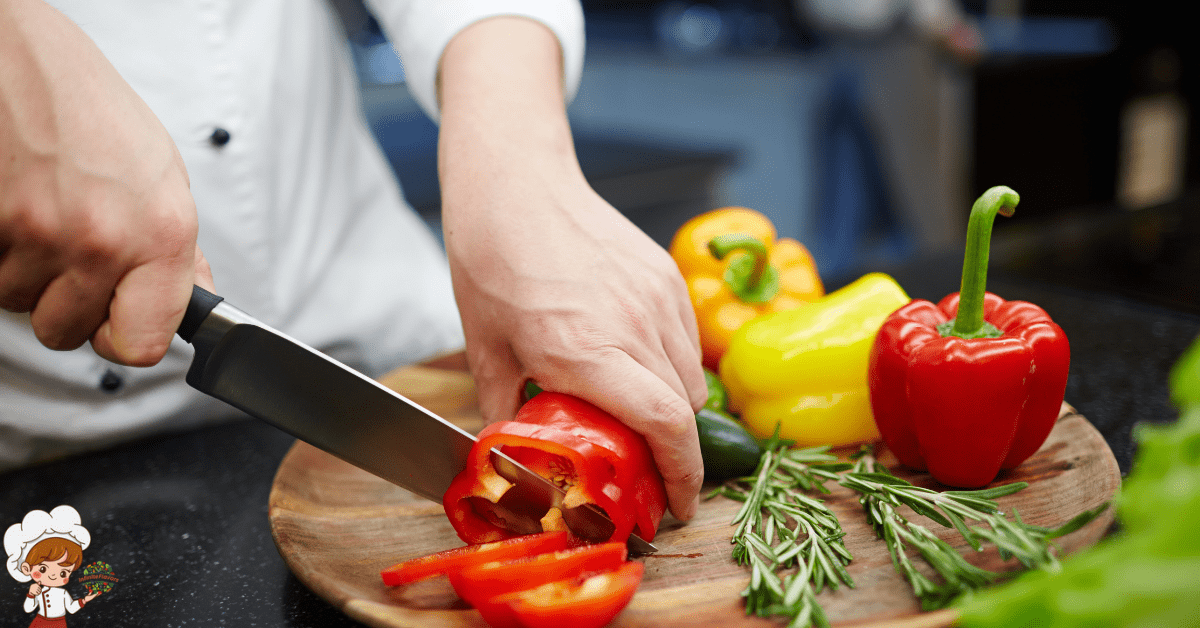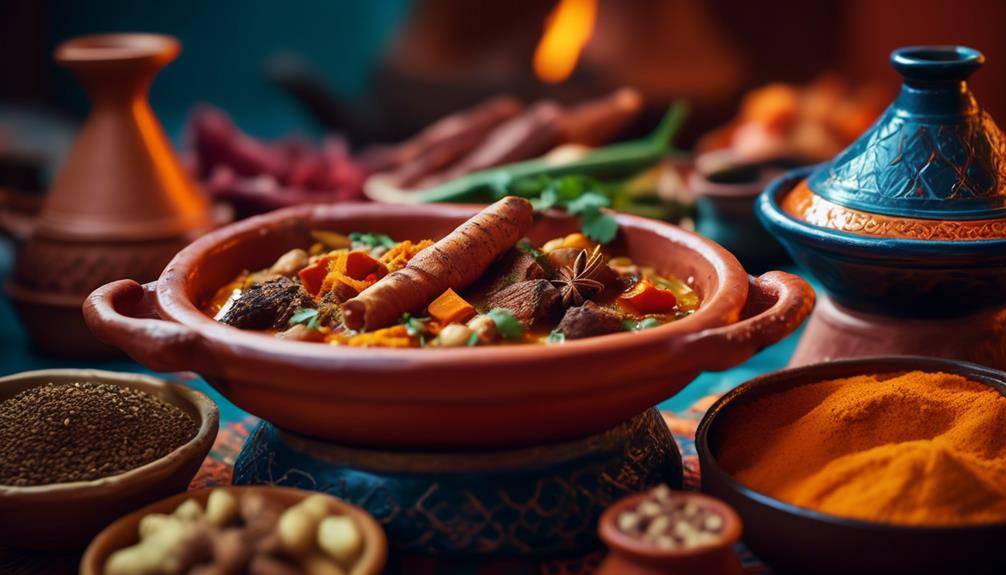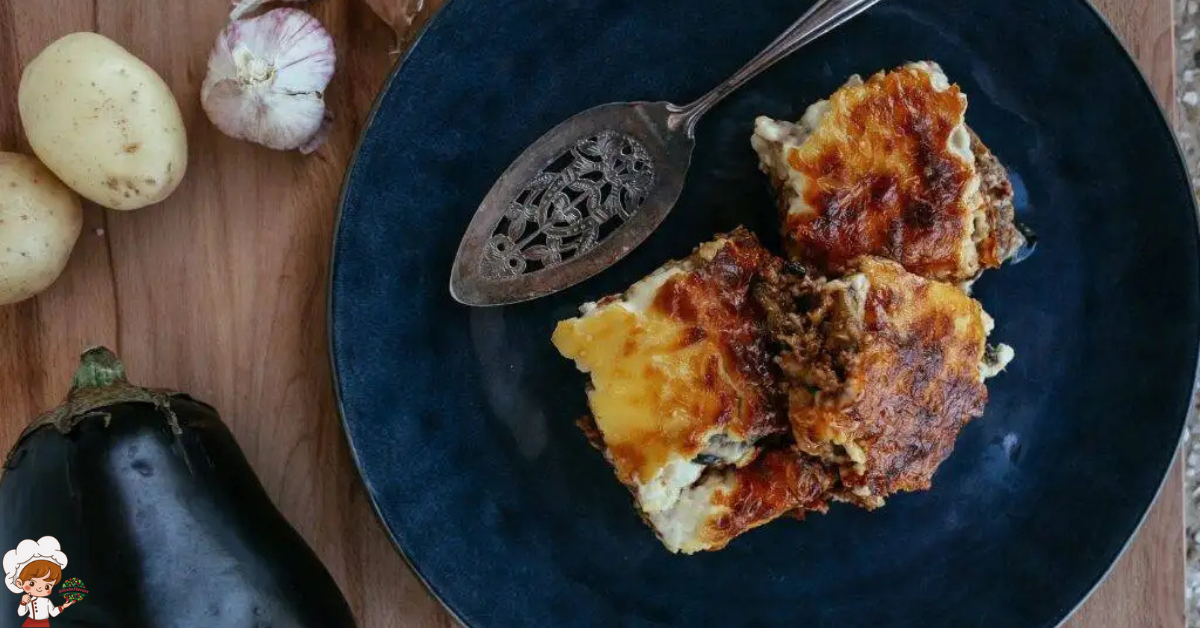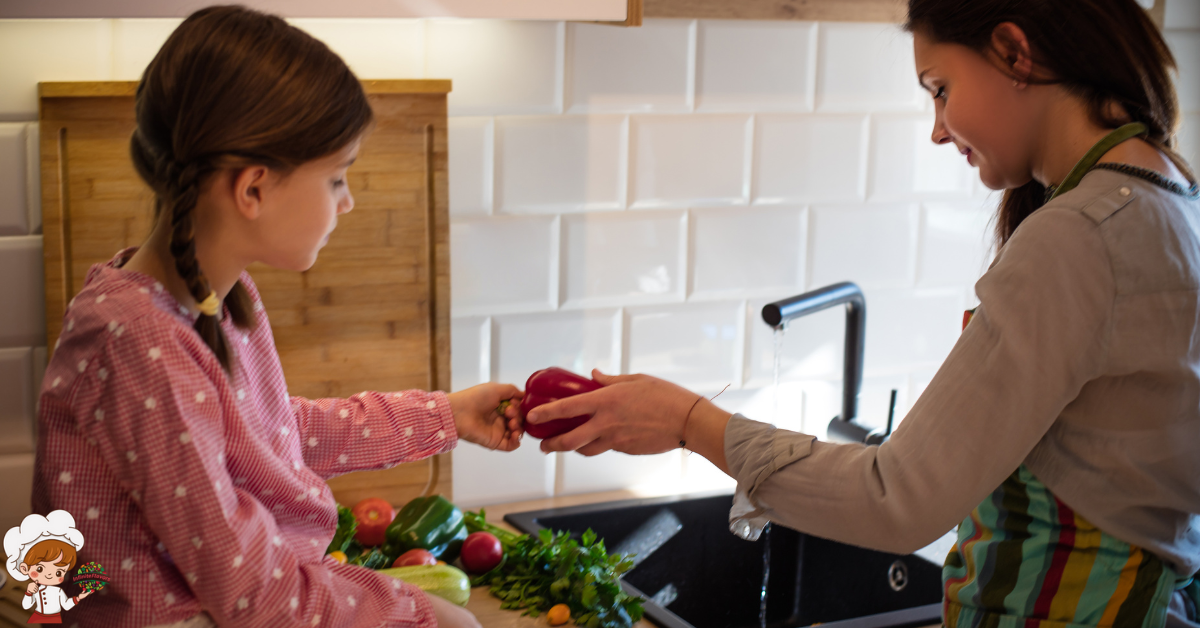The Best Italian Cooking Classes For Beginners
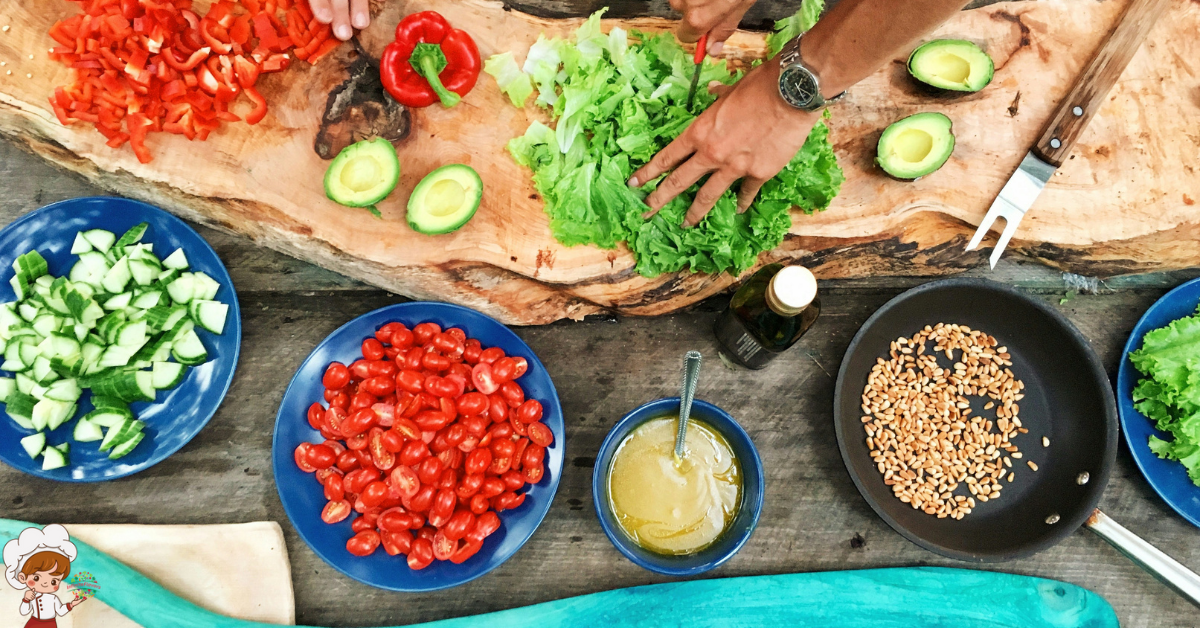
Italian Cooking Classes; Are you ready to embark on a culinary journey through the enchanting flavors of Italy? Look no further than our Italian Cooking Classes For Beginners. Get ready to dive into a world of deliciousness as you learn the secrets of creating authentic Italian dishes. From mastering the art of pasta making to perfecting homemade pizza, our classes will take you step by step through the fundamentals of Italian cuisine.
Discover the essential ingredients, learn classic sauces, and indulge in decadent desserts. With our expert instructors, you’ll gain the skills and confidence to recreate these mouthwatering dishes in the comfort of your own kitchen. So, grab your apron and join us for a memorable experience that will leave your taste buds craving more.
Basic Knife Skills
Learn the essential knife skills needed for Italian cooking. When it comes to preparing delicious Italian dishes, having proper knife skills is crucial. Not only does it make the cooking process more efficient, but it also ensures your safety in the kitchen. Knife safety should always be a top priority, and by following a few simple guidelines, you can protect yourself from accidents.
First and foremost, make sure your knives are sharp. Dull knives are more likely to slip and cause injuries. Regularly sharpening your knives and honing them with a steel will keep them in top condition. Additionally, always hold the knife securely with a firm grip and keep your fingers away from the blade. When cutting, use a steady and controlled motion, keeping the knife blade close to the cutting board. Avoid using excessive force, as it can lead to accidents.
Proper knife maintenance is also essential for both safety and longevity. After each use, wash your knives carefully, using warm soapy water and a non-abrasive sponge. Dry them thoroughly to prevent rusting. Never leave your knives soaking in water or throw them in the dishwasher, as this can damage the blade and handle. Store your knives in a wooden block or on a magnetic strip, ensuring they are kept away from other utensils to prevent dulling or chipping.
Finally, regularly check your knives for any signs of wear and tear, such as loose handles or chips in the blade. If you notice any issues, it’s best to have them repaired or replaced to maintain their effectiveness and safety. By practicing proper knife safety and maintenance, you’ll be well-equipped to tackle any Italian recipe with ease and confidence.
Essential Italian Ingredients
Are you ready to discover the key ingredients that will bring the flavors of Italy into your kitchen? Let’s start with pasta varieties, from long and thin spaghetti to short and hollow rigatoni, each perfect for different sauce pairings. Next, we’ll explore the aromatic herbs that give Italian dishes their distinct taste, such as basil, oregano, and rosemary. And finally, we can’t forget about the star of Italian cuisine – olive oil, which adds richness and depth to everything from dressings to sautés. Get ready to take your Italian cooking to the next level with these essential ingredients.
Key Pasta Varieties
When it comes to learning Italian cooking, it’s important to familiarize yourself with the key pasta varieties, as they are essential ingredients in Italian cuisine. Italian cuisine is known for its wide variety of pasta shapes, each designed to hold different sauces and flavors. From long and thin strands of spaghetti to small shells of conchiglie, there is a pasta shape for every dish.
The cooking technique of pasta is also crucial in Italian cooking. Pasta should be cooked al dente, which means it is firm to the bite. This ensures that the pasta retains its shape and texture when mixed with sauces. So, whether you’re making a classic spaghetti bolognese or a creamy fettuccine Alfredo, knowing the different pasta shapes and how to cook them properly will elevate your Italian cooking skills to the next level.
Traditional Italian Herbs
Exploring the key pasta varieties in Italian cooking, you’ll discover that traditional Italian herbs are essential ingredients that add depth and flavor to your dishes. These herbs are not only delicious but also offer numerous health benefits. Here are five traditional Italian herbs that you can incorporate into your cooking:
- Basil: Known for its sweet and aromatic flavor, basil adds a fresh taste to pasta dishes. It is also rich in antioxidants and has anti-inflammatory properties.
- Oregano: With its strong and savory flavor, oregano is commonly used in Italian cuisine. It is a great source of vitamins and minerals, such as vitamin K and iron.
- Rosemary: This herb has a distinctive pine-like aroma and is perfect for seasoning meats and roasted vegetables. Rosemary is known for its anti-inflammatory and digestion-aiding properties.
- Thyme: Thyme has a subtle, earthy flavor and is often used in soups and stews. It is a good source of vitamins A and C, as well as iron.
- Parsley: Used as a garnish or ingredient, parsley adds a fresh and bright taste to dishes. It is high in vitamins K, C, and A and is known for its detoxifying properties.
Essential Olive Oil Uses
Looking to enhance your Italian dishes with a key ingredient that brings out the true flavors of the cuisine? Look no further than olive oil. Not only does it add a rich and distinctive taste to your dishes, but it also comes with numerous health benefits. Olive oil is known for its high levels of monounsaturated fats, which can help reduce the risk of heart disease and lower bad cholesterol levels.
When it comes to different types of olive oil, there are a few to choose from. Extra virgin olive oil is the highest quality and is perfect for drizzling over salads or dipping bread. Regular olive oil is more versatile and can be used for sautéing, roasting, and grilling. So, next time you’re cooking up an Italian feast, don’t forget to reach for the olive oil.
Mastering Pasta Making
Join our Italian cooking classes for beginners and learn the art of mastering pasta making. It’s time to roll up your sleeves, put on an apron, and dive into the wonderful world of pasta. Here are five reasons why our classes will leave you feeling excited and inspired:
- Explore a world of pasta shapes: From spaghetti to penne, tortellini to ravioli, our classes will teach you how to create a variety of pasta shapes from scratch. Get ready to impress your friends and family with your newfound pasta-making skills.
- Craft homemade pasta sauces: No pasta dish is complete without a delicious sauce. In our classes, you’ll learn how to make traditional Italian pasta sauces like marinara, carbonara, and pesto. Discover the secrets behind balancing flavors and achieving the perfect consistency.
- Hands-on experience: Our classes are interactive and hands-on, ensuring that you truly master the art of pasta making. You’ll be guided by experienced chefs who will teach you the techniques and tricks that make all the difference in creating the perfect pasta.
- Connect with a vibrant community: Our cooking classes provide a unique opportunity to meet fellow food enthusiasts who share your passion for Italian cuisine. Learn from each other, exchange ideas, and make lifelong connections with like-minded individuals.
- Take home recipes and skills: At the end of each class, you’ll receive a collection of authentic Italian pasta recipes to recreate at home. Armed with these skills, you’ll be able to whip up impressive pasta dishes for any occasion.
Perfecting Homemade Pizza
You will frequently learn the art of perfecting homemade pizza in our Italian cooking classes for beginners. Making pizza from scratch is a delightful experience that allows you to explore different flavors and experiment with various toppings. In our classes, we will teach you the essential techniques to create a pizza that is truly exceptional.
One of the first things you will learn is how to make the perfect pizza dough. We will guide you through the process of mixing the ingredients, kneading the dough, and letting it rise. You will discover the secrets to achieving a dough that is light, airy, and full of flavor. Our instructors will also teach you different dough techniques, such as stretching and tossing, to create the perfect thin crust or a thick, fluffy crust.
Once you have mastered the dough, it’s time to move on to the toppings. You will have the opportunity to learn about traditional Italian pizza toppings, as well as experiment with your own unique combinations. From classic margherita with fresh tomatoes, mozzarella, and basil, to indulgent toppings like prosciutto, arugula, and truffle oil, the possibilities are endless. Our classes will teach you how to balance flavors and create a harmonious blend of ingredients that will make your pizza truly memorable.
As you perfect your homemade pizza-making skills, you will gain confidence and knowledge that will allow you to create delicious pizzas at home. Whether you prefer a simple and traditional pizza or a gourmet masterpiece, our Italian cooking classes for beginners will equip you with the skills to make your pizza dreams come true. Get ready to impress your friends and family with your homemade pizzas that are sure to be the talk of the town.
Classic Italian Sauces
Learn to master the art of preparing classic Italian sauces in our Italian cooking classes for beginners. Italian cuisine is known for its rich and flavorful sauces, which are the heart and soul of many classic Italian pasta dishes. From the creamy Alfredo to the tangy marinara, these sauces elevate the taste of your favorite pasta dishes to a whole new level. Here are five classic Italian sauces that will surely make your taste buds dance with joy:
- Marinara: This vibrant, tomato-based sauce is a staple in Italian cooking. Made with fresh tomatoes, garlic, onions, and herbs, it’s the perfect companion to spaghetti or penne.
- Bolognese: A hearty meat sauce made with ground beef, pancetta, onions, carrots, celery, and tomatoes. This sauce is traditionally served with tagliatelle or fettuccine, creating a comforting and satisfying meal.
- Pesto: A simple yet flavorful sauce made with fresh basil, garlic, pine nuts, Parmesan cheese, and olive oil. Tossed with spaghetti or gnocchi, it adds a burst of freshness to your dish.
- Carbonara: A creamy sauce made with eggs, pecorino cheese, pancetta, and black pepper. It coats the pasta with a velvety texture and a rich, savory taste.
- Arrabiata: A spicy tomato sauce made with chili peppers, garlic, and tomatoes. It adds a fiery kick to any pasta dish and pairs well with a robust red wine.
When it comes to pairing wine with Italian sauces, the general rule is to match the intensity of the sauce with the wine. Lighter sauces like marinara or pesto go well with a crisp white wine, while richer sauces like Bolognese or Carbonara pair nicely with a medium-bodied red wine. The spicy Arrabiata sauce calls for a bold red wine to complement its heat. So, whether you’re a beginner or a seasoned cook, our Italian cooking classes will teach you the secrets to creating these classic Italian sauces and pairing them perfectly with wine. Get ready to impress your friends and family with your newfound culinary skills!
Risotto 101
Have you ever wondered how to make the perfect risotto? In this section, we will explore the techniques needed to create a creamy and flavorful dish that will impress your friends and family. From the importance of stirring to the different variations you can try, you’ll discover everything you need to know to become a risotto master. Get ready to elevate your cooking skills and enjoy the delicious results!
Risotto Techniques Explained
Once you understand the basics of Italian cooking, it is important to delve into the world of risotto by exploring various techniques. Risotto is a classic Italian dish known for its creamy texture and rich flavors. Here are some techniques to master the art of making risotto:
- Constant stirring: Stirring is crucial to release the starch from the rice grains, giving the dish its signature creaminess.
- Gradual addition of broth: Adding hot broth to the rice in small increments allows for even cooking and absorption of flavors.
- Proper rice selection: Choose short-grain varieties like Arborio, Carnaroli, or Vialone Nano, which have a higher starch content.
- Proper stock: Use a flavorful, homemade stock or a good quality store-bought one to enhance the taste of the risotto.
- Resting time: Let the risotto rest for a few minutes before serving to allow the flavors to meld together.
Perfecting Creamy Risotto
To perfect your creamy risotto, you need to understand the key techniques and ingredients involved. Risotto is a classic Italian dish known for its rich and velvety texture. The key to achieving this texture lies in the proper cooking technique. Start by sautéing onions and garlic in butter or olive oil until they become translucent. Then, add Arborio rice and stir it constantly for a minute, allowing the grains to toast slightly. Next, gradually add warm broth, stirring continuously until the rice absorbs the liquid. This slow and steady process releases the starch from the rice, creating the desired creamy consistency.
As for flavor combinations, the possibilities are endless. You can add sautéed mushrooms, Parmesan cheese, peas, or even seafood for a decadent twist. Troubleshooting common risotto problems, such as undercooked or mushy rice, can be easily solved by adjusting the cooking time or adding more liquid. With these techniques and flavor combinations, you’ll be able to create a perfect creamy risotto every time.
Flavorful Risotto Variations
If you’re looking to explore flavorful risotto variations, start by experimenting with different ingredients and flavors. Risotto is a versatile dish that can be customized to suit your taste preferences. Here are some risotto flavor combinations to inspire your culinary adventures:
- Mushroom and truffle: Earthy mushrooms combined with the luxurious aroma of truffle oil create a rich and decadent risotto.
- Lemon and asparagus: Bright and tangy lemon pairs perfectly with the fresh and crisp flavors of asparagus, adding a refreshing twist to your risotto.
- Tomato and basil: Classic Italian flavors come together in this combination, with the sweetness of tomatoes balanced by the herbaceousness of basil.
- Spinach and feta: The creamy saltiness of feta cheese complements the earthy greens of spinach, creating a vibrant and satisfying risotto.
- Pancetta and peas: The smoky and savory pancetta enhances the sweetness of peas, resulting in a delicious and comforting risotto.
When cooking risotto, remember to use Arborio or Carnaroli rice for their high starch content, which gives risotto its creamy texture. Toast the rice before adding liquid to enhance its nutty flavor. Gradually add warm broth and stir often to release the starch and create a velvety consistency. Enjoy the process of creating your own unique risotto variations and savor the delightful flavors that emerge from your experimentation.
Art of Antipasti
Learn the art of creating delicious antipasti dishes in our Italian Cooking Classes for Beginners. Antipasti, meaning “before the meal” in Italian, refers to a variety of appetizers served before the main course. In these classes, you will not only learn how to prepare antipasti, but also how to present them beautifully and pair them with the perfect ingredients.
Antipasti presentation is an important aspect of Italian cuisine. It is all about creating a visually appealing spread that entices the taste buds. You will learn how to arrange a colorful assortment of cured meats, cheeses, marinated vegetables, and olives on a platter. The combination of textures, flavors, and colors will make your antipasti truly captivating.
In addition to presentation, antipasti pairing is another crucial skill you will acquire. You will discover how to match different flavors and textures to create harmonious and balanced combinations. For example, pairing soft and creamy cheeses with crunchy breadsticks or bruschetta creates a delightful contrast. You will also learn the art of pairing salty cured meats with tangy pickled vegetables for a burst of flavor.
During our classes, we will guide you through the process of selecting the finest ingredients for your antipasti. From choosing the ripest tomatoes for a Caprese salad to selecting the perfect olive oil for marinating vegetables, you will gain a deep understanding of the importance of quality ingredients in Italian cooking.
Decadent Italian Desserts
Continue your culinary journey in our Italian Cooking Classes for Beginners as we delve into the realm of decadent Italian desserts. Get ready to satisfy your sweet tooth with these indulgent creations that are sure to leave you craving for more.
Here are five mouthwatering dessert recipes that will transport you straight to the streets of Italy:
- Tiramisu: This classic Italian dessert is a heavenly combination of coffee-soaked ladyfingers, creamy mascarpone cheese, and a sprinkle of cocoa. Each bite is a delicate balance of flavors and textures, making it the perfect ending to any meal.
- Cannoli: Crispy pastry shells filled with a sweet ricotta cream, studded with chocolate chips, and dusted with powdered sugar. These iconic Sicilian treats are a true delight for the senses.
- Panna Cotta: A silky-smooth custard made from simmering cream, sugar, and vanilla. It is then set with gelatin and served with a luscious fruit sauce. This elegant dessert is simple yet sophisticated, making it a favorite among dessert lovers.
- Gelato: Italy’s answer to ice cream, gelato is known for its intense flavors and creamy texture. From classics like chocolate and pistachio to unique combinations like stracciatella (chocolate chip) and bacio (hazelnut and chocolate), there is a gelato flavor for everyone.
- Zeppole: These light and fluffy Italian doughnuts are deep-fried until golden brown and then dusted with powdered sugar. Traditionally filled with a sweet pastry cream or Nutella, they are a popular treat during festive celebrations.
To elevate your dessert experience, don’t forget to pair these decadent delights with the perfect Italian dessert wine. Whether it’s a sweet Moscato d’Asti or a rich Vin Santo, the right wine can enhance the flavors and create a harmonious balance.
Regional Specialties
Get ready to embark on a culinary journey through Italy’s diverse regions, where popular dishes, unique regional ingredients, and traditional cooking techniques await you. From the rich flavors of Tuscany’s hearty ribollita soup to the delicate balance of flavors in Sicily’s arancini, each region has its own specialties that showcase the vibrant culinary heritage of Italy. You’ll learn how to recreate these authentic dishes in your own kitchen, using fresh ingredients and time-honored techniques that have been passed down through generations.
Popular Italian Dishes
During your Italian cooking classes for beginners, you will explore the regional specialties of Italy’s popular dishes. Get ready to tantalize your taste buds with these mouthwatering delights:
- Tiramisu: Indulge in the creamy layers of mascarpone cheese, ladyfingers soaked in espresso, and a hint of cocoa that make this classic Italian dessert irresistible.
- Margherita Pizza: Experience the simplicity of a perfectly thin crust topped with fresh tomatoes, mozzarella cheese, and fragrant basil leaves.
- Pasta Carbonara: Learn the art of creating a velvety sauce with eggs, Pecorino Romano cheese, and crispy pancetta, tossed with al dente pasta.
- Risotto alla Milanese: Discover the creamy goodness of saffron-infused risotto, cooked slowly to perfection and enriched with Parmigiano-Reggiano cheese.
- Osso Buco: Delight in tender, braised veal shanks served with a flavorful gremolata, accompanied by a creamy saffron risotto.
Prepare to be transported to the heart of Italy as you master these popular dishes and learn the secrets of Italian cooking techniques. Buon appetito!
Unique Regional Ingredients
Explore the unique regional ingredients that add distinct flavors to Italy’s culinary traditions during your Italian cooking classes for beginners. Italy is known for its diverse regional cooking styles, each with its own set of ingredients and cooking techniques. From the northern regions of Piedmont and Lombardy to the southern regions of Sicily and Calabria, every corner of Italy offers a wide array of regional specialties.
In the north, you’ll find ingredients like truffles, polenta, and balsamic vinegar, which are commonly used in dishes such as risotto and osso buco. In central Italy, the region of Tuscany is famous for its use of olive oil, pecorino cheese, and wild boar. Moving to the south, Sicily is known for its use of seafood, pistachios, and citrus fruits, resulting in dishes like pasta alla norma and cannoli.
Italian Cooking Classes; Traditional Cooking Techniques
Learn essential traditional cooking techniques used in regional specialties during your Italian cooking classes for beginners. Discover the secrets behind the mouthwatering dishes that have been passed down through generations in Italy. Immerse yourself in the rich culinary traditions of Italy and learn how to create authentic Italian flavors in your own kitchen. During your classes, you will explore traditional cooking methods that highlight the unique flavors and ingredients of each region. From mastering the art of making handmade pasta to perfecting the technique of slow-cooking a ragu sauce, these classes will teach you the foundations of Italian cuisine. Get ready to unlock the secrets of Italian cooking and bring the taste of Italy to your table.
- Learn the art of making fresh pasta from scratch, using traditional techniques
- Discover the secrets of creating the perfect risotto, with its creamy texture and rich flavors
- Master the art of making traditional Neapolitan pizza, from kneading the dough to achieving the perfect crust
- Explore the techniques of slow-cooking a hearty Tuscan stew, known as ribollita
- Learn the art of making homemade gelato, using traditional methods and fresh ingredients
Tips for Hosting an Italian Dinner Party
You should regularly host Italian dinner parties if you want to impress your guests with delicious homemade pasta and authentic Italian flavors. Hosting an Italian dinner party is not only a great way to showcase your culinary skills, but it also allows you to create a memorable and immersive experience for your guests. To make your Italian dinner party a success, here are some tips to help you along the way.
Firstly, consider choosing a theme for your dinner party. Italian cuisine is incredibly diverse, so you can choose a specific region or dish to focus on. Whether it’s a rustic Tuscan theme with hearty dishes like ribollita and bistecca alla fiorentina, or a seafood-focused menu inspired by the Amalfi Coast, having a theme will help you plan your menu and create a cohesive dining experience.
Next, don’t forget to pair your dishes with the perfect Italian wines. Italy is known for its incredible wines, so take the time to research and select wines that complement your menu. For example, if you’re serving a rich and meaty dish like osso buco, a full-bodied red wine like Barolo or Chianti Classico would be an excellent choice. On the other hand, if you’re serving a light seafood pasta, a crisp and refreshing white wine like Vermentino or Pinot Grigio would be a great option.
Lastly, pay attention to the little details to create an authentic Italian atmosphere. Set the table with rustic tableware, decorate with fresh flowers or olive branches, and play some traditional Italian music in the background. These small touches will transport your guests to Italy and enhance their dining experience.
With these tips in mind, you’re ready to host a memorable Italian dinner party. So gather your loved ones, cook up a storm, and enjoy an evening filled with delicious food, great wine, and wonderful company. Buon appetito!
Conclusion
So, whether you’re a beginner in the kitchen or just looking to expand your culinary skills, these Italian cooking classes are the perfect way to dive into the world of delicious Italian cuisine. From mastering the art of pasta making to perfecting homemade pizza and exploring regional specialties, you’ll be well on your way to becoming a master Italian chef. So grab your apron and get ready to impress your friends and family with your newfound cooking expertise!



